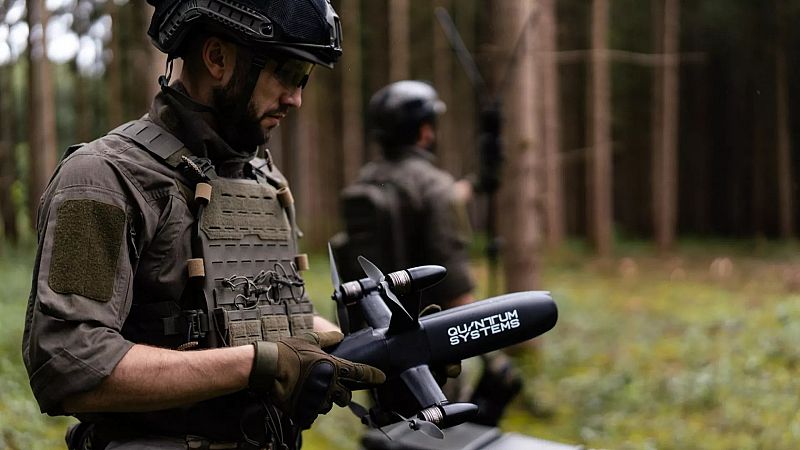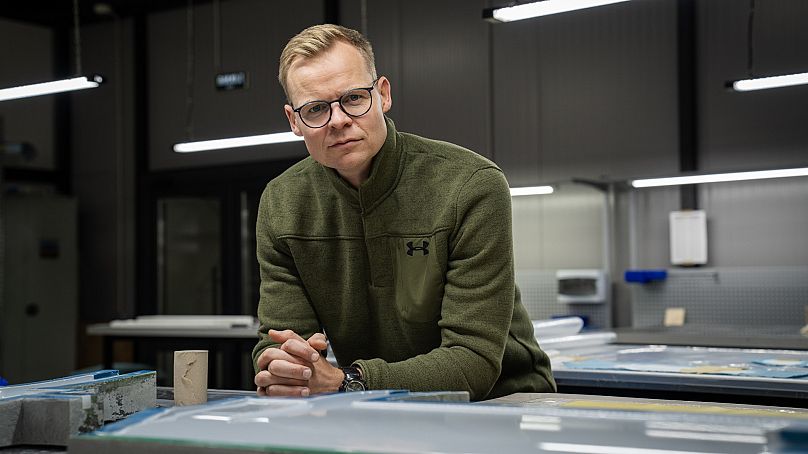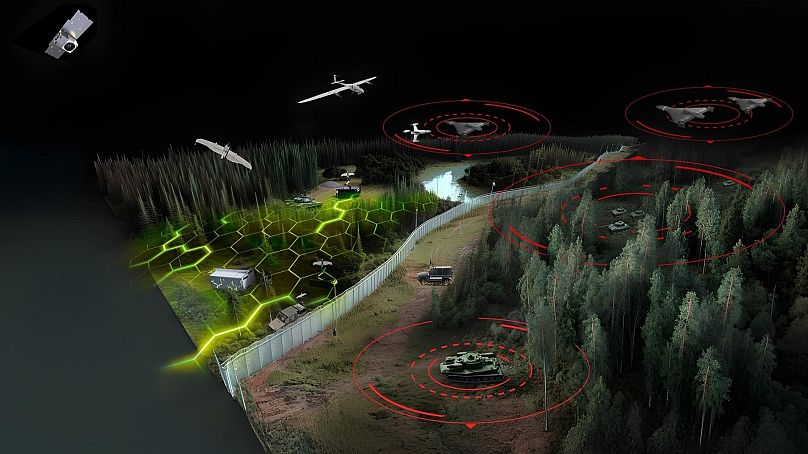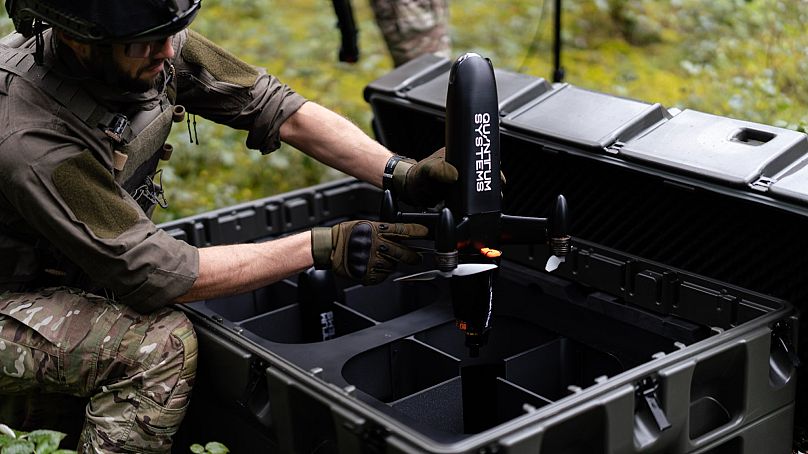Europe's drone wall against Russia: Political puzzles and bureaucratic hurdles

To defend NATO's eastern flank against Russian drone incursions, the EU is planning to build what it calls a drone wall.
"The drone wall is not a wall, but a system of systems," Sven Kruck, co-CEO of the German drone manufacturer Quantum Systems told Euronews.
"Reconnaissance, sensor fusion and defence, integrated across thousands of kilometres," Kruck explained adding that "at its core, the project is a network of sensors and defence systems aimed at securing NATO's eastern flank."
NATO's response to the Russian drones that recently entered Polish airspace has been criticised as disproportionate, with only a fraction of the drones shot down using costly missiles and jets.
Experts warn that the deployment of hundreds of cheap drones could quickly overwhelm the alliance's limited interceptors, leaving parts of its airspace unprotected while the systems reload, a report by the International Institute for Strategic Studies (IISS) suggested.
3D-printed defence
Sven Kruck co-heads Quantum Systems, one of Europe's leading drone companies, which develops both hardware and software in-house and specialises in unmanned aerial reconnaissance.
The company is gaining valuable experience from the war in Ukraine, operating a site there with more than 200 staff and collaborating with international partners, including the German armed forces.
In addition to reconnaissance drones, Quantum Systems builds interceptor drones. Paul Strobel, the company's Public Affairs Lead, told Euronews that the Hunter drone could be used as part of a drone wall.
The unmanned aircraft has the advantage of being far cheaper to deploy than sending a manned aircraft to shoot down a drone.
"We make sure the interceptor drone is cheaper than the target it shoots down," Strobel said. "That’s how you 'win'. If you can keep the cost of deployment low, including supply chains and production. We can do that because the drones are largely 3D-printed."
Along the border, the drones are set up like portable air-defence batteries, connected to power and software, so that in the event of an airspace breach a hatch automatically opens and the drones can launch.
The target is then locked on, and "depending on the payload, it either detonates or destroys the target through a ramming manoeuvre," Strobel explained. With attack drones capable of speeds up to 500 km/h, he added, "the impact alone is often enough already."
Man versus machine
The process is not yet entirely automatic, though. Ultimately, a human still has to confirm whether an incoming aircraft is a combat or hobby drone.
"That's why this is a sensitive issue at the regulatory level," Strobel added, noting that this kind of air‑defence battery is not suitable for every location.
If such a system were deployed at an airport, for instance, safeguards would need to ensure that a drone could not accidentally collide with a passenger aircraft and cause serious damage.
"By linking these systems with software, you can solve that problem: the software can tell what's flying up there, which aircrafts are friendly or hostile and which ones shouldn't be flying up there," Strobel explained.
If the object turns out to be unauthorised, operators can decide whether to intercept it. In the final 500 metres, the drone's onboard camera is manually checked and the interception is confirmed with the push of a button. Alternatively, the operation can be aborted.
Strobel pointed out that such a system does not yet exist, citing a "huge bureaucratic problem". "From a technical point of view, it could work: reconnaissance drones along the border, linked to interceptor drones, with additional reconnaissance drones further back," he explained
"Reconnaissance drones could report and even identify whether an incoming drone is a combat one, so that decision wouldn't have to be done at the very last moment."
Bureaucratic hurdles
The defence industry can only provide input on what is technically possible; political and bureaucratic questions are for the authorities to resolve. "The EU and NATO need to coordinate: who is responsible for intercepting a drone?" Strobel asked.
First, the EU has to determine what tasks fall to agencies such as Frontex and to each member state. "Then each member state needs to decide which responsibilities lie with the police, the military and the border guards," Strobel added.
At every level, the issue fragments into multiple components.
"As a manufacturer, our clients are not the EU or NATO, but the member states, through their armed forces or police," he told Euronews and explained that Quantum Systems provides the software that links all the actors.
"If it allows member states, the military and police to communicate effectively, all the better. Our approach is very much bottom-up: we empower those who actually have to put it into practice. Ideally, the initiative will eventually come together as a whole," Strobel argued.
"If we want a drone wall, we have to see it as part of a broader transformation of the European security system. Industry and politics need a shared framework and clear points of contact. Only then can a metaphor become operational reality," the company's Co-CEO Kruck added, emphasising that the drone wall is not just a technical system, but a coordinated effort between politics, industry and the military.
Today




